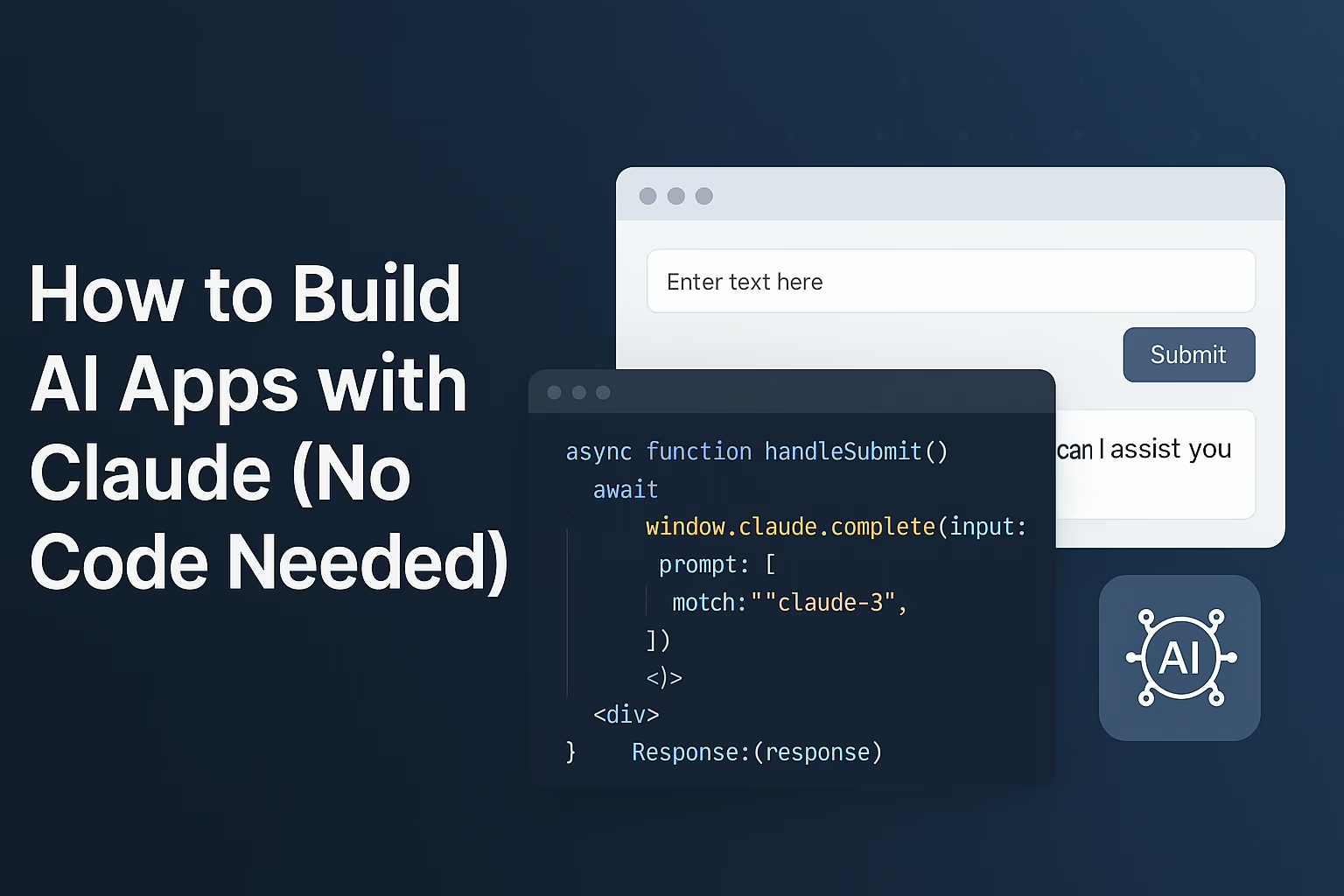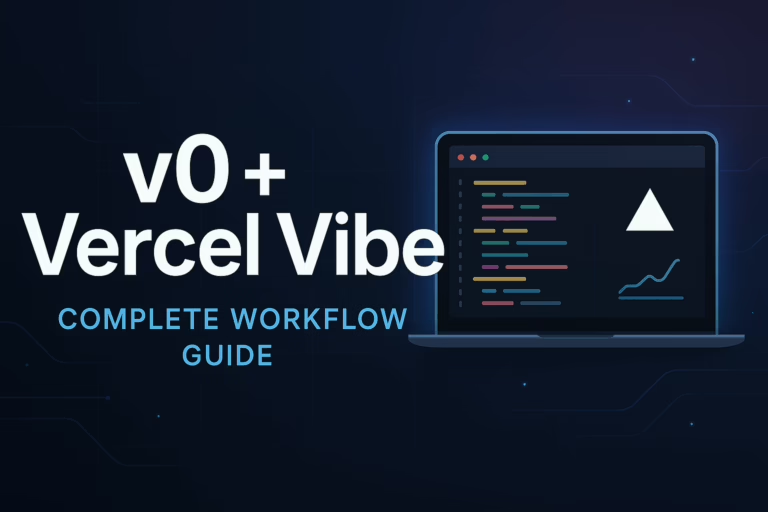Anthropic has unleashed a revolutionary update that transforms Claude from a simple chatbot into a comprehensive no-code application development platform. The company’s latest enhancement to its Artifacts feature allows users to create, host, and share interactive AI-powered applications directly within Claude’s interface, democratizing app development for millions of users across all subscription tiers.
The No-Code Revolution Powered by AI
The enhanced Artifacts feature represents a significant leap in making AI development accessible to everyone. Claude can now create artifacts that interact with Claude through an API, turning these artifacts into AI-powered apps where the economics actually work for sharing. When someone uses your Claude-powered app, they authenticate with their existing Claude account, their API usage counts against their subscription rather than yours, and you pay nothing for their usage.
This economic model solves a major barrier in AI app sharing. Traditional platforms require developers to manage API keys and absorb costs for user interactions. Claude’s approach eliminates API key management and hosting costs, allowing creators to focus entirely on bringing their ideas to life.
How Claude’s App Creation Works
The magic happens through natural language interaction. Users simply describe what they want to create, and Claude generates the necessary code using React and JavaScript. The new window.claude.complete() method opens a controlled pathway that allows prompts composed by the JavaScript artifact application to be run against Claude.
Claude handles the complex orchestration behind the scenes. The AI writes real code that manages prompt engineering, error handling, and orchestration logic. Users can see, modify, and share this code freely, making the development process transparent and educational.
Low-Code/No-Code Market Adoption
Community-Driven Innovation Through Artifacts
Since its introduction, users have created over half a billion artifacts, demonstrating the platform’s enormous appeal. Early adopters have built AI-powered games with NPCs that remember conversations and adapt to player choices, learning tools that adjust to individual skill levels, and data analysis apps where users upload CSVs and ask follow-up questions in natural language.
The diversity of applications showcases Claude’s versatility. Examples include:
- Educational Tools: Interactive flashcard generators that adapt to learning pace
- Business Applications: Custom dashboards with performance metrics
- Creative Projects: Writing assistants for scripts and technical documentation
- Data Analysis: Tools that process files and generate insights through natural language
- Gaming: Simple browser-based games with AI-driven elements
Technical Capabilities and Current Limitations
Claude’s artifact system operates within a controlled browser sandbox environment with specific capabilities and constraints. Users can use a Claude API within artifacts, process files and create rich UIs with React, and see, fork, and customize any artifact.
Current limitations include no external API calls, no persistent storage, and restriction to a text-based completion API. However, these constraints ensure security while still enabling powerful applications. The sandbox environment prevents artifacts from accessing features like localStorage or making unauthorized external API calls.
AI Integration vs Replacement Beliefs
Competitive Landscape and Market Position
Claude’s transformation intensifies competition with OpenAI, particularly challenging features like Canvas. This rivalry is driving rapid advancements in AI accessibility and capabilities, democratizing app development for users across various backgrounds.
The no-code movement continues gaining momentum. The low-code platform market was valued at $7.61 billion in 2021 and is projected to reach $36.43 billion by 2027, with 70% of new business applications expected to use low-code/no-code technologies by 2025.
Claude’s approach differs from traditional no-code platforms by embedding AI intelligence directly into applications rather than just simplifying development tools. This creates a new category of “AI-native” applications that can think and adapt.
Economic Model Revolution
The billing model represents a paradigm shift in AI app development. Traditional platforms require developers to manage infrastructure costs and API usage fees. Claude’s model where end-users’ subscriptions cover their interaction costs removes financial barriers to sharing and scaling applications.
This approach encourages experimentation and sharing within the community. Developers can create sophisticated applications without worrying about unexpected costs from viral adoption. The model promotes a collaborative ecosystem where innovation thrives without economic constraints.
Market Growth Projections
Accessibility Across User Tiers
The capability is available in beta to Free, Pro, and Max plan users, ensuring broad accessibility. This democratic approach contrasts with many platforms that restrict advanced features to premium tiers.
Free users can create and interact with AI-powered artifacts, while premium subscriptions offer enhanced capabilities. The inclusive model encourages widespread adoption and experimentation across user segments, fostering a diverse creative community.
Industry Expert Perspectives
Industry leaders recognize the significance of this development. As noted in the analysis,
“Companies’ use of low-code and no-code tools have steadily increased over the past decade–and today these solutions are critical to how developers, designers, CIOs and others build scalable applications and effective development processes.”
The integration of AI with no-code platforms represents more than technological advancement – it signals a fundamental shift in who can build software and how quickly ideas can become reality.
Future Implications and Trends
The convergence of AI and no-code development is reshaping software creation. The 2025 State of AI Development Report shows 25% of developers deploying AI applications in production with an additional 39% in testing stages.
Claude’s approach positions Anthropic uniquely in this evolving landscape. While competitors focus on traditional development tools or conversational agents, Claude bridges the gap between conversation and creation, making AI development accessible to non-technical users.
The platform’s evolution suggests a future where the barrier between idea and implementation continues to shrink. As AI becomes more sophisticated and user interfaces more intuitive, we can expect even more powerful applications to emerge from this democratized development environment.
Frequently Asked Questions
How do I get started with Claude’s AI-powered app development?
Enable the “Create AI-powered artifacts” feature in your Claude app settings, then simply describe what you want to build in natural language. Claude will generate the code and create a functional application. Anthropic Support Guide
Do I need coding experience to build apps with Claude?
No coding experience is required. Claude handles all the technical implementation while you focus on describing your ideas and providing feedback for improvements. YPredict Analysis
What types of applications can I build with Claude Artifacts?
You can create educational tools, games, data analysis applications, writing assistants, interactive dashboards, and agent workflows. The platform supports React-based UIs and file processing capabilities. Anthropic Official Announcement
Are there any costs for sharing my Claude-powered apps?
No, you pay nothing when others use your applications. Users authenticate with their own Claude accounts, and their usage counts against their personal subscriptions, not yours. Anthropic Billing Model
What are the current limitations of Claude’s app development feature?
Current limitations include no external API calls, no persistent storage, and restriction to text-based completion API. However, these constraints ensure security while still enabling powerful applications. Feature Limitations
Resources and Citations
Build and share AI-powered apps with Claude – Anthropic
Prototype AI-Powered Apps with Claude artifacts – Anthropic Support
84% of Tech Leaders Say AI Won’t Replace Low-Code Tools
35 Must-Know Low-Code Statistics And Trends – Kissflow
Build and share AI-powered apps with Claude – Simon Willison







